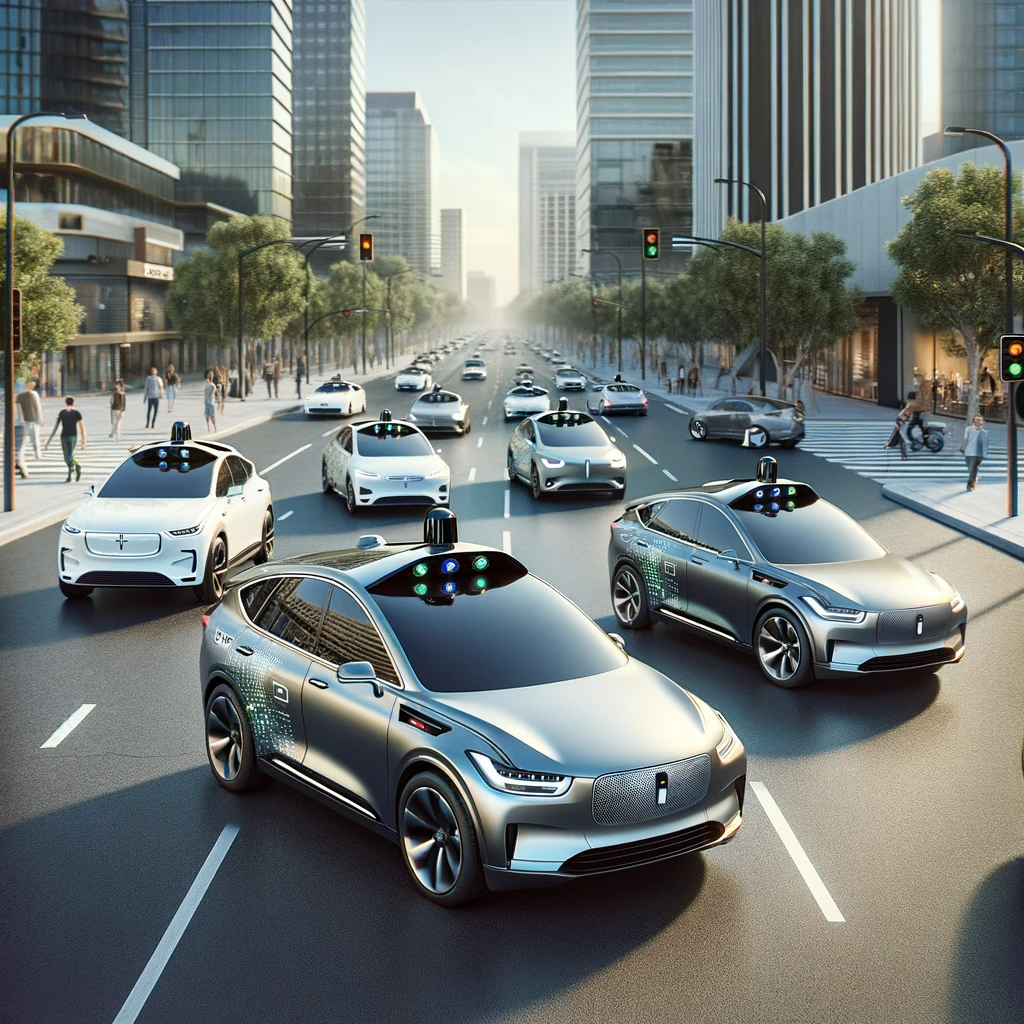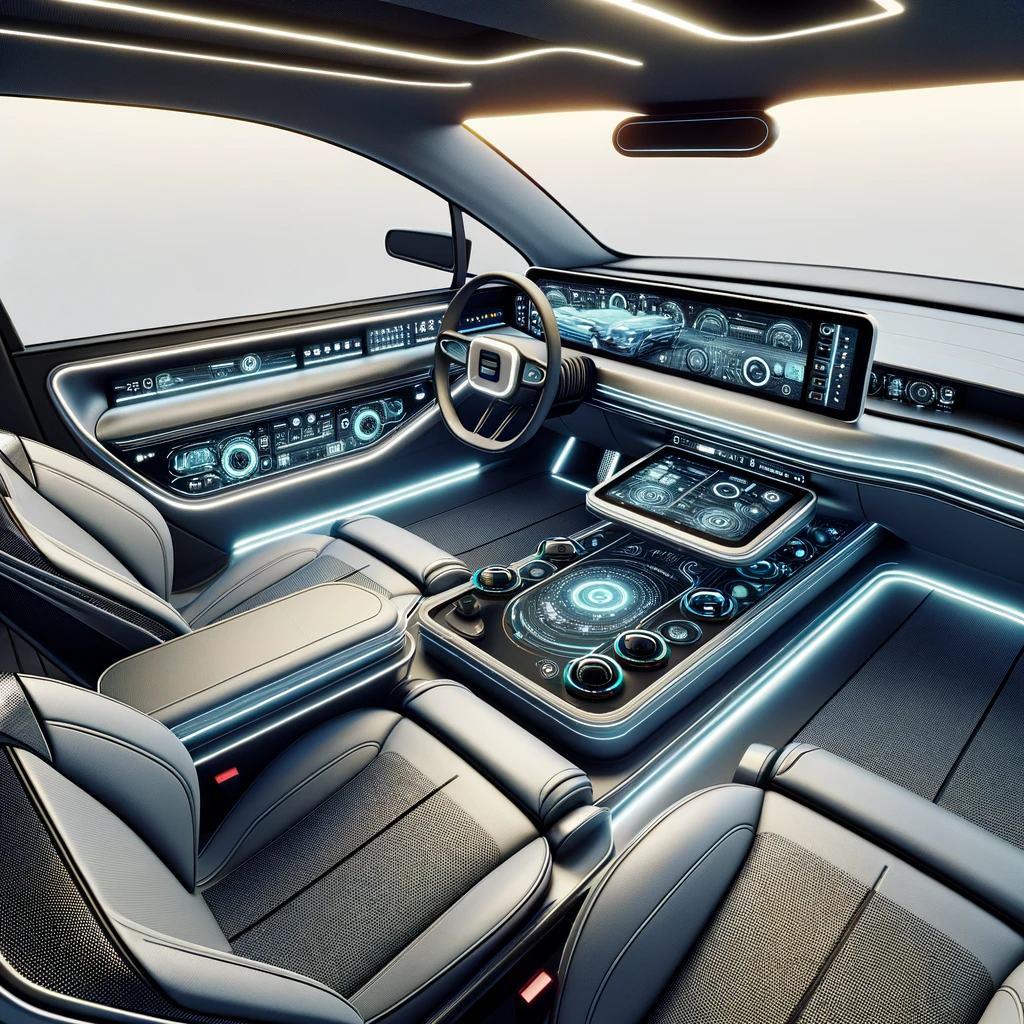AI appears to be everywhere. From Netflix recommendations that understand our viewing preferences to personalized product suggestions on e-commerce platforms, AI has revolutionized marketing in ways we couldn’t have imagined just a few years ago.
But AI’s influence is not limited to marketing alone it has extended its reach into various aspects of our lives, including the automotive industry.
As we stand on the cusp of a revolution, self-driving cars or autonomous vehicles (AVs) are no longer figments of sci-fi but a tangible reality shaping our future. Powered by leaps and bounds in Artificial Intelligence, these self-navigating vehicles promise to redefine our commutes, making them safer, more efficient, and greener. The integration of AI in AVs allows for advanced perception and decision-making capabilities, enabling vehicles to navigate complex traffic scenarios and react to unexpected situations in real-time.
However, with great innovation comes great uncertainty. Are we ready to embrace this shift, or does it fill us with trepidation?
This blog post aims to delve into the fascinating world of AVs, scrutinizing their advancements, understanding their challenges, and envisaging their future potential.
Fasten your seatbelts! We’re going to steer through the intriguing landscape of self-driving cars. Whether you’re a tech enthusiast or a curious observer, let’s embark on this journey together, exploring whether we love this exciting horizon or fear the unknown it brings.
What Are Self-Driving Cars?
Born out of the desire to improve safety, increase efficiency, and reduce human error, these high-tech marvels are much more than just vehicles; they’re a testament to human ingenuity.
At their core, self-driving cars employ a sophisticated blend of sensors, cameras, and radar systems to perceive the world around them. But the real magic lies in their use of Artificial Intelligence.

AI serves as the brain of these vehicles, processing the data collected to make split-second decisions, navigate roads, and, ultimately, reach destinations without any human intervention.
This is not just a new trend in tech; it’s a paradigm shift in how we think about transportation. So yes, AI can supercharge businesses and drive around town, too. According to Euronews, there are now around 30 million self-driving cars worldwide.
Self-Driving Cars – What People Feel About Them
When it comes to self-driving cars, public sentiment remains divided. Here are recent findings that reveal what the majority of the public feels about AVs and their impact on society.
- A significant 73% of Americans express fear about riding in an autonomous vehicle. This highlights a deep-rooted apprehension towards this emerging technology. (Gitnux)
- On the flip side, 50% of consumers believe that self-driving vehicles will bolster road safety. This shows trust in the potential of autonomous technology to revolutionize our transportation systems. (Gitnux)
- However, a majority of Americans (83%) have expressed concern about sharing public highways and roads with driverless cars, whether as motorists, bicyclists, or pedestrians. (Advocates for Highway and Auto Safety)
This anxiety spans across various demographics, indicating a broad unease about co-existing with autonomous vehicles on the road.
Such contrasting views underscore the need for continued dialogue, education, and transparency around the development and deployment of self-driving cars or autonomous vehicles.
Concerns with Self-Driving Cars
As we accelerate toward a future dominated by Autonomous Vehicles (AVs), several safety challenges arise:
- Decision-Making in Unpredictable Scenarios – AVs must be capable of making split-second decisions just like a human driver, which can be difficult in unpredictable situations.
- Cybersecurity Risks – AVs could potentially be hacked, posing significant safety threats.
- Adverse Weather Conditions – AVs currently struggle to perform optimally in challenging weather conditions.
Despite these concerns, AI is being leveraged to enhance safety.
The Role AI Plays in Self-Driving Cars
Autonomous Vehicles are a marvel of modern technology, largely due to their sophisticated AI software. This software is intricately connected to a network of sensors embedded throughout the vehicle, gathering data from various sources like Google Street View and built-in cameras.
The AI then simulates human perception and decision-making processes using deep learning—a subset of AI that mimics the neural networks of the human brain.

It’s this technology that allows AVs to interpret complex road scenarios, recognize traffic signals, and differentiate between a pedestrian and a lamppost.
Moreover, the AI also controls driver actions in the vehicle’s control systems, such as steering and braking. By continuously learning from vast amounts of data, the AI software can make informed decisions, react to unforeseen situations, and, ultimately, keep passengers safe.
The blend of AI technology with automotive engineering is driving us closer to a future where our cars are not just vehicles but intelligent transportation systems.
The Road Ahead
The advent of self-driving cars promises to bring about seismic shifts in our society. One of the most profound impacts could be on urban planning. AVs could significantly reduce the need for parking spaces, potentially triggering a renaissance in city design.
Simultaneously, they could disrupt the employment landscape, particularly affecting driving-related jobs.
Yet, the path to a driverless future is fraught with technological challenges. Mastering diverse weather conditions remains a daunting task for AVs. Furthermore, creating an environment where AVs and traditional vehicles coexist safely is another significant hurdle.
As for the timeline, widespread AV adoption might take a decade or more, given the current pace of development.
Looking beyond, future innovations could include vehicle-to-vehicle communication systems for improved safety and efficiency alongside the tantalizing prospect of flying autonomous vehicles.

Author Bio: Brian Shelton is an entrepreneur, marketer, and life-long learner committed to helping businesses achieve impactful results. He founded Grow Predictably to provide tailored marketing strategies to generate predictable, profitable growth. With over a decade of experience in the industry, Brian has helped businesses, large and small reach their goals and drive positive change in the world.